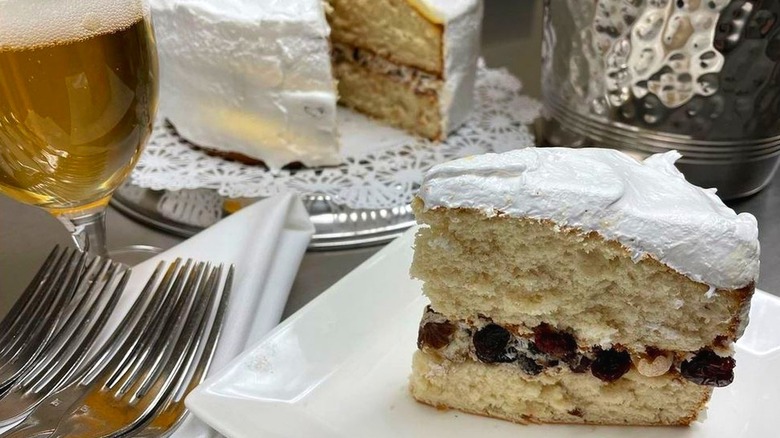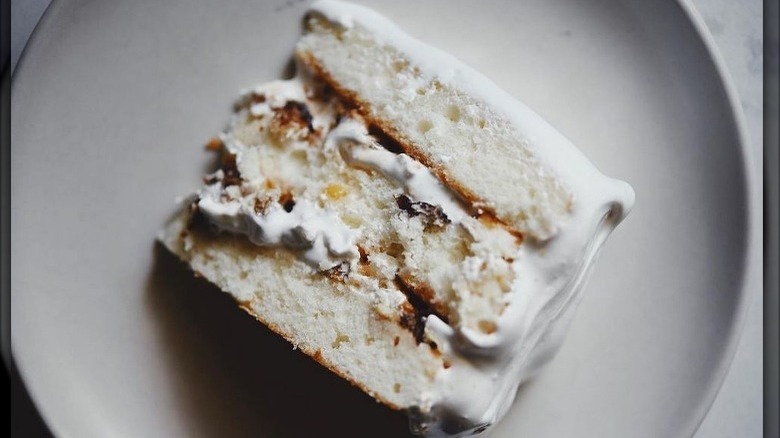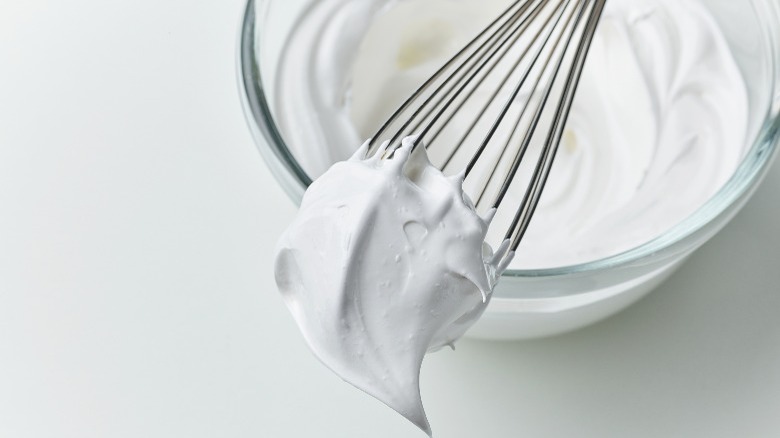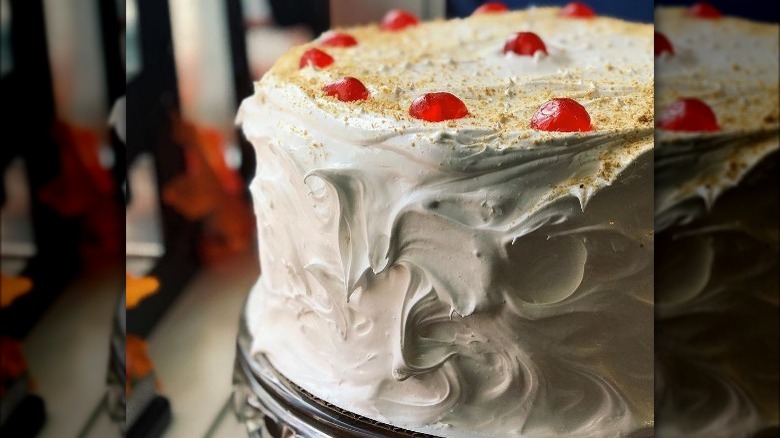Lady Baltimore Cake Is A Luxurious, Staple Dessert In The South
The Lady Baltimore cake is a famous Southern dessert loved for its fruit and nut filling and its fluffy white frosting. This beloved treat starts with an egg white-based batter, which gives the cake its distinctively light texture. The airy delight is special enough for all sorts of important occasions, from holidays to weddings. The Lady Baltimore even inspired an alternative version called the Lord Baltimore cake, which uses egg yolks instead of egg whites.
The recipe for a Lady Baltimore cake has evolved over time, like many dishes handed down from generation to generation. Each family seems to have customized it to suit their tastes so you'll see coconut flakes and cherries on some versions while others leave the bright white frosting bare. Despite its status as a classic dessert, it may be hard to find at your local bakery. Still any baker with some experience with making layer cakes will be able to create their own Lady Baltimore at home. It's definitely worth the effort.
The history of Lady Baltimore cake
The exact origins of this cake are unknown, but many believe the credit should go to Florence and Nina Ottolengui, two sisters who managed the Lady Baltimore Tea Room in Charleston, South Carolina. The sisters reportedly based their sweet treat on a Queen cake from the late 1800s. A romance novel helped propel the cake to fame in 1906. Author Owen Wister published "Lady Baltimore" that year, and the cake had a featured role in one scene of the book. Wister's inspiration for this passage came from a trip he had made to Charleston. The Ottolengui sisters reportedly appreciated Wister's help in publicizing the cake so much that they shipped him one on every year.
While the book wasn't much of a hit, its description of the cake was compelling enough that readers were interested in trying it out for themselves. This created high demand for recipes for Lady Baltimore cake. According to The Old Foodie, the first recipe for this popular confection appeared in the December 24, 1906 issue of the "Daily Gazette And Bulletin" newspaper, which was based in Williamsport, Pennsylvania. This seems to be a straightforward version with its egg white-based batter and cooked frosting. It doesn't describe which nuts to use for the filling, but it calls for the fruit to be raisins.
How a Lady Baltimore cake is made
A Lady Baltimore cake gets its airy texture from egg whites that are beaten and folded into the other ingredients: sugar, milk, butter, flour, and baking soda. The batter is divided between two cake pans and baked. Some recipes include almond extract to flavor the batter. Others use vanilla extract instead, but the first published version of a Lady Baltimore skipped both of these.
To create the cloud-like frosting start by making a syrup from sugar and water. Beaten egg whites then get added to the syrup to form the frosting, according to one of the early recipes. This frosting is similar to divinity frosting and seven-minute frosting, although both of those usually include corn syrup. Later versions of the frosting recipe do, in fact, use corn syrup, which helps create a smoother texture. There are also parallels to Italian meringue frosting, and some recipes call for a bit of sherry to be added.
One of the most distinctive elements of a Lady Baltimore cake is its filling. Recipes call for chopped nuts and dried fruit to be added between the cake's layers, giving it texture and crunch. The types of nuts and fruits that get used vary a bit, with some recipes calling for raisins, figs, and pecans and others using walnuts and dates. There's usually a dash of alcohol in the cake, too. Many recipes instruct soaking the fruit in brandy or rum.
Where to find a Lady Baltimore cake
The odds of getting your hands on your very own Lady Baltimore cake may depend on your geography. This cake is a Southern classic so you have a better chance of finding one at your local bakery if you live in that region. And the cake you find there may be closer to the original recipe as well. Buttercup Bake Shop in the northeast, for example, lists the cake for sale through their store, but their version features cherries and coconut flakes, items found in some later versions of a Lady Baltimore cake.
Perhaps the best way to experience an authentic Lady Baltimore cake is to try your hand at making one yourself. And if you're feeling really ambitious, you could use the leftover egg yolks to create the popular variation of this dessert, the Lord Baltimore cake. After all, can you ever have too many cakes?



